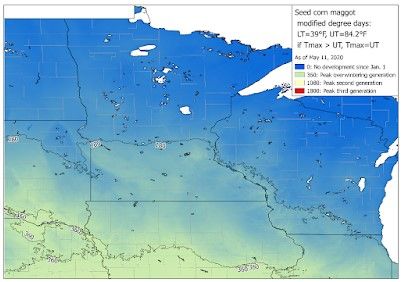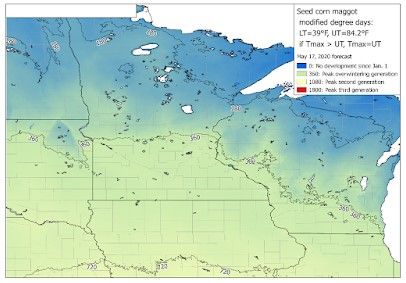As of May 11, 2020, the overwintering generation peak emergence at 360 degree-days is occuring in central Iowa and is forecast to move through southern Minnesota within the next week as daily average temperatures rebound (Figs. 1 and 2).


Degree-day maps only indicate the time of year when high risk can occur and do not guarantee the seed corn maggot peak population will be large enough to cause economic damage.
This year, the timing of the first generation occurs when much of the corn crop has already been planted in Minnesota and is at reduced risk of infestation. However, the remaining corn and soybean acres to be planted in southern Minnesota during the next week could fall within this window.
For seed corn maggot, answering if it will be at damaging population levels is less exact than predicting timing. Fields with historical seed corn maggot problems or high organic matter should be considered for additional management if they are being planted this week. Our mostly warm and dry spring means many fields across the state are not ideal for seed corn maggot, and no action is needed when adults do show up. However, growers with heavy soil that has been slow to warm or dry out may still have some risk.
After planting, there are no effective treatments once damage occurs, though there are some insecticides labeled for in-furrow or seed-applied use at planting. Planting can also be delayed in high-risk fields until later in May to avoid peak seedcorn maggot flight; this decision also needs to be balanced with the likelihood of seed corn maggot reaching damaging levels in particular field and if it’s economically feasible to wait another week depending on the growing needs of the crop.
Source : umn.edu